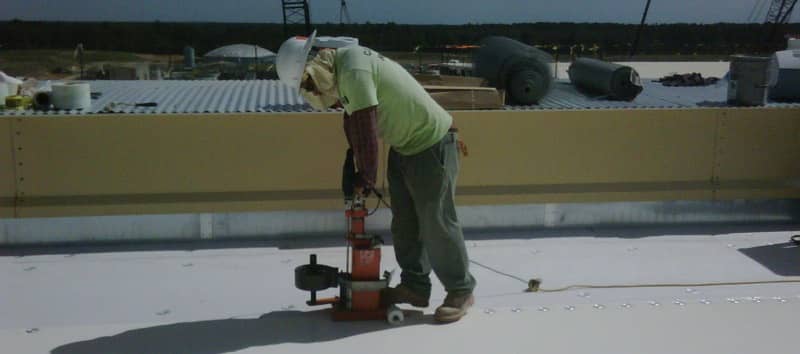 The purpose of any roof system is to keep water out of and divert it away from the building. Seems like a simple enough task but it is far from easy. If there’s one thing I’ve learned over the past 40-years, it is that roofs leak. And they leak for numerous reasons and for the most part, the least of all are the materials. I have found the occasional arrow and bullet hole in the membrane but the following are the six most common causes of roof leaks.
The purpose of any roof system is to keep water out of and divert it away from the building. Seems like a simple enough task but it is far from easy. If there’s one thing I’ve learned over the past 40-years, it is that roofs leak. And they leak for numerous reasons and for the most part, the least of all are the materials. I have found the occasional arrow and bullet hole in the membrane but the following are the six most common causes of roof leaks.
Improper Drainage
If you don’t get the water off the roof there’s a good chance that it is going to find its way into your building. It has to go somewhere and you can’t depend on evaporation to solve the problem. Proper drainage is prerequisite for roof design.
Penetrations
The more penetrations you have on a rooftop the greater likelihood that water is going to find its way through. Designers need to eliminate all unnecessary penetrations and for those that remain, there needs to be some common sense applied to their shape and positioning. Conduit placed so close together they cannot be individually flashed, angle iron and other red iron penetrations that require the use of a pitch pan to seal them are leaks just waiting to happen.
Rooftop Units
HVAC equipment can be the frustrating source of water entry. The condensate pans can often plug up or rust out allowing for leaks in the building when it’s not even raining. And, these units are often accompanied by pitch pans to seal the power and cooling lines.
Walls and Facades
It is not uncommon for cracks in the exterior walls or exposed masonry above the roof line to permit water into the building. It is not easy to diagnose and sometimes even harder to convince the building owner that there is nothing wrong with his or her roof.
Rooftop Traffic
Maintenance personnel and service technicians for the variety of HVAC and other penetrations that may find their way on the rooftop are notorious offenders. Unintended damage is a common cause of leaks. Tool boxes, HVAC panels, carts and window washing equipment are just a few of the sources to cuts and punctures in membrane roof systems.
Human Error
Workmanship ranks high on the list of unintended leaks. Improper installation of the materials, poor sealing or faulty seaming seem to create the most common sources of leaks. It takes a craftsman to install today’s materials I haven’t seem a system that is entirely “roofer proof”.
Apart from the selection of high quality materials, the roof contractor will be the principal factor that determines whether or not your roof system performs leak free. The idea that the lowest price wins can often come back and haunt an owner. Even the best are not perfect but ensuring that the contractor installing the roof system is truly skilled, licensed and authorized by the materials manufacturer should be paramount in your decision making process. Spending a little more for exceptional materials and workmanship can reap huge benefits many, many years down the road.
-1.png?width=500&height=271&name=FiberTite_Only%20(500px%20wide)-1.png)


-1.png)